
How to Use LED: Two Pin (red) - Long Pins: Examples, Pinouts, and Specs
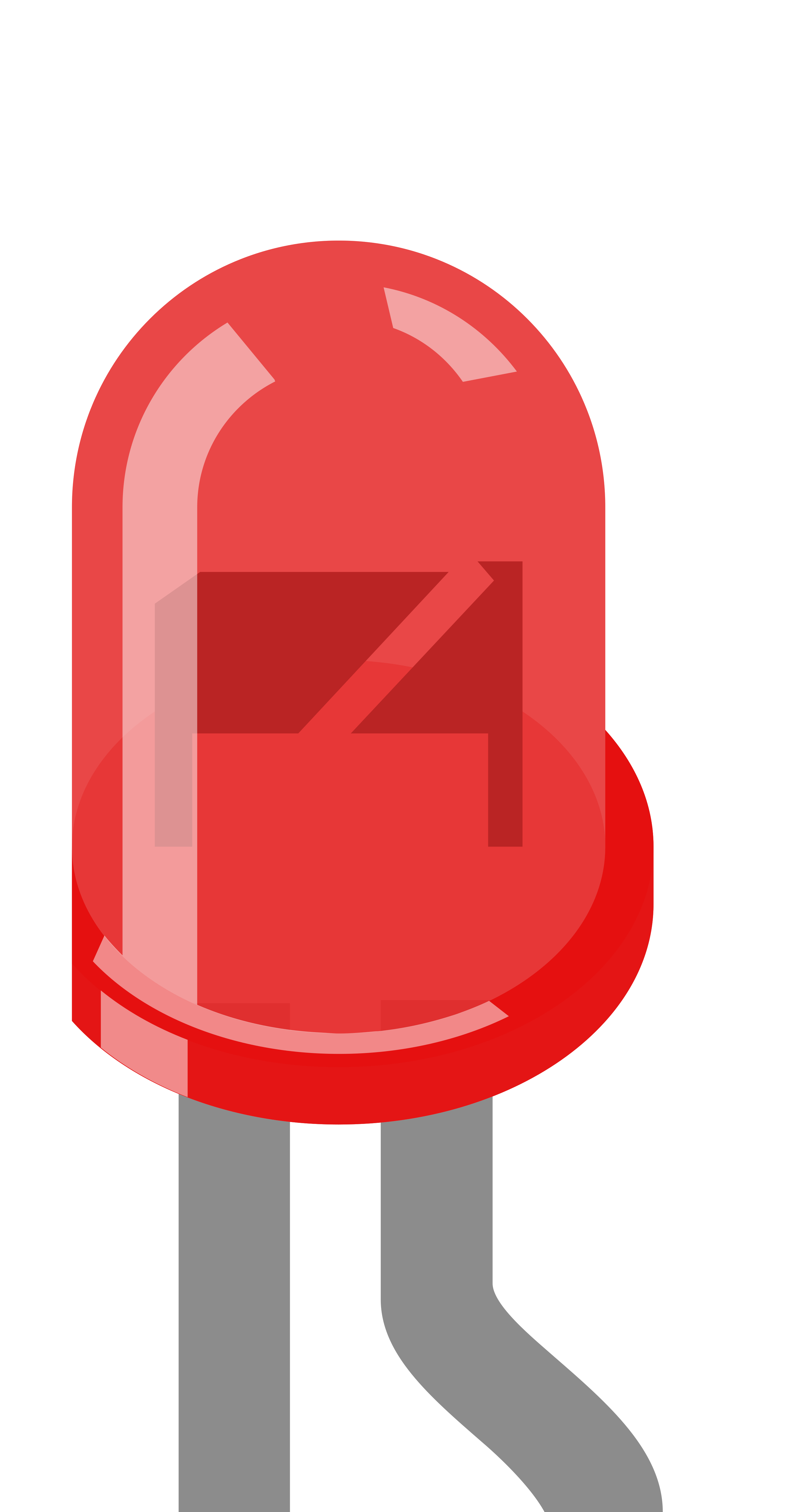
 Design with LED: Two Pin (red) - Long Pins in Cirkit Designer
Design with LED: Two Pin (red) - Long Pins in Cirkit DesignerIntroduction
A light-emitting diode (LED) is a semiconductor device that emits light when an electric current flows through it. This particular LED emits red light and features two pins for easy integration into electronic circuits. The longer pin is the anode (positive terminal), while the shorter pin is the cathode (negative terminal), simplifying proper orientation during installation.
Explore Projects Built with LED: Two Pin (red) - Long Pins
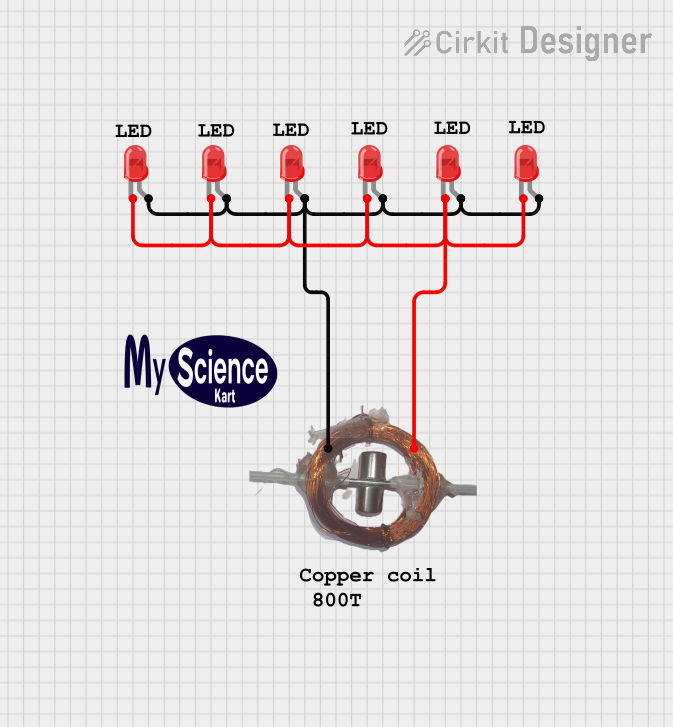
 Open Project in Cirkit Designer
Open Project in Cirkit Designer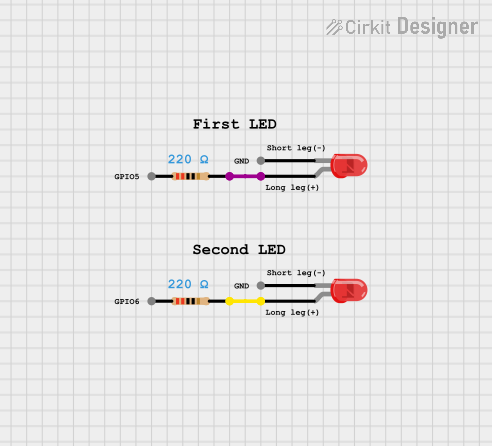
 Open Project in Cirkit Designer
Open Project in Cirkit Designer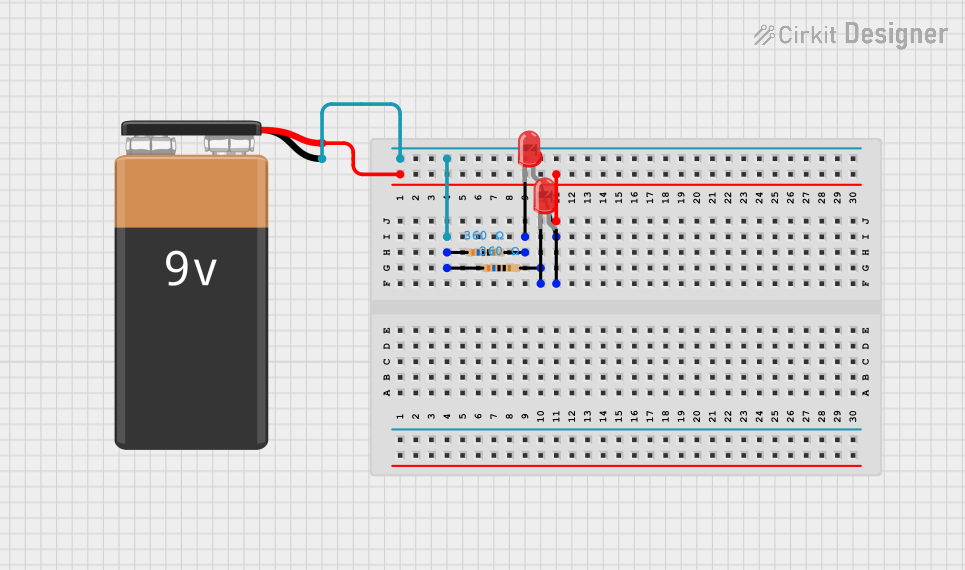
 Open Project in Cirkit Designer
Open Project in Cirkit Designer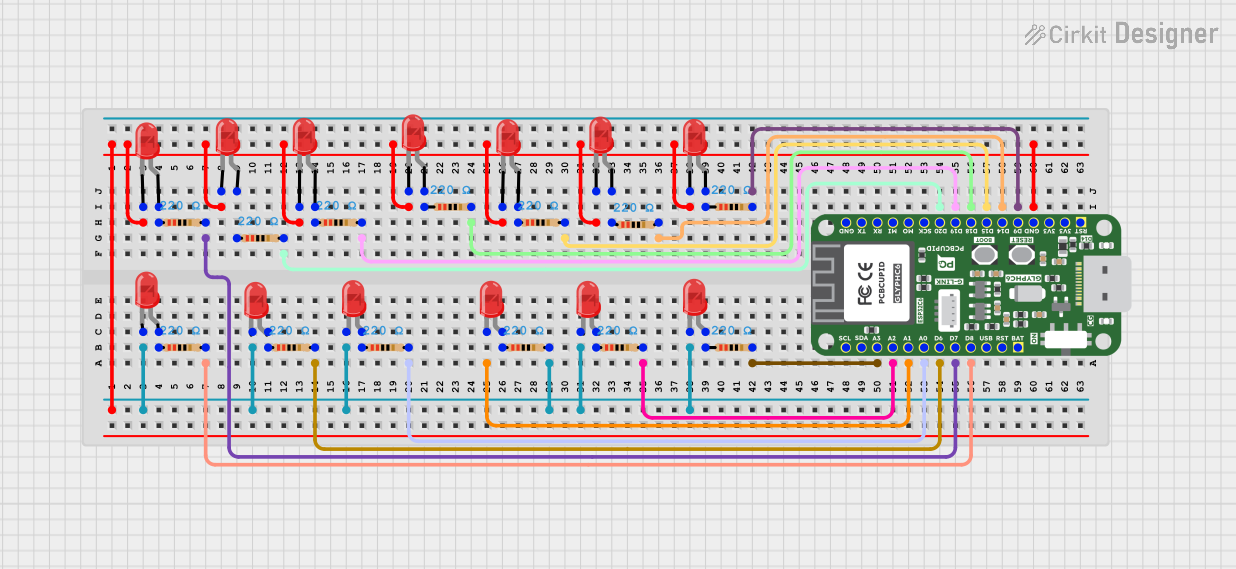
 Open Project in Cirkit Designer
Open Project in Cirkit DesignerExplore Projects Built with LED: Two Pin (red) - Long Pins

 Open Project in Cirkit Designer
Open Project in Cirkit Designer
 Open Project in Cirkit Designer
Open Project in Cirkit Designer
 Open Project in Cirkit Designer
Open Project in Cirkit Designer
 Open Project in Cirkit Designer
Open Project in Cirkit DesignerCommon Applications and Use Cases
- Indicator lights in electronic devices
- Status indicators in circuits
- Decorative lighting and displays
- Educational projects and prototyping
- Signal transmission in optoelectronic systems
Technical Specifications
Below are the key technical details for the Two Pin (Red) LED:
| Parameter | Value |
|---|---|
| Forward Voltage (Vf) | 1.8V to 2.2V |
| Forward Current (If) | 20mA (typical) |
| Maximum Current (Imax) | 30mA |
| Wavelength | 620nm to 630nm (red light) |
| Viewing Angle | 20° to 30° |
| Operating Temperature | -40°C to +85°C |
| Storage Temperature | -40°C to +100°C |
Pin Configuration
| Pin | Name | Description |
|---|---|---|
| Long Pin | Anode (+) | Connect to the positive terminal of the power supply or circuit. |
| Short Pin | Cathode (-) | Connect to the negative terminal or ground. |
Usage Instructions
How to Use the LED in a Circuit
- Identify the Pins: The longer pin is the anode (+), and the shorter pin is the cathode (-).
- Connect a Resistor: Always use a current-limiting resistor in series with the LED to prevent damage. Calculate the resistor value using Ohm's Law:
[
R = \frac{V_{supply} - V_f}{I_f}
]
Where:
- ( V_{supply} ) is the supply voltage.
- ( V_f ) is the forward voltage of the LED (1.8V to 2.2V).
- ( I_f ) is the desired forward current (typically 20mA).
- Insert the LED: Place the LED in the circuit, ensuring the anode is connected to the positive side and the cathode to the negative side.
- Power the Circuit: Apply power to the circuit, and the LED should emit red light.
Important Considerations and Best Practices
- Polarity Matters: LEDs are polarized components. Reversing the polarity may prevent the LED from lighting up or cause damage.
- Use a Resistor: Never connect the LED directly to a power source without a resistor, as this can result in excessive current and damage the LED.
- Avoid Overcurrent: Do not exceed the maximum forward current (30mA) to ensure the longevity of the LED.
- Heat Management: While LEDs generate minimal heat, ensure proper ventilation in high-power applications.
Example: Connecting the LED to an Arduino UNO
Below is an example of how to connect the LED to an Arduino UNO and make it blink:
Circuit Setup
- Connect the anode (long pin) of the LED to a digital pin on the Arduino (e.g., pin 13) through a 220Ω resistor.
- Connect the cathode (short pin) to the GND pin of the Arduino.
Arduino Code
// Example code to blink a red LED connected to pin 13 of Arduino UNO
// Define the pin number for the LED
const int ledPin = 13;
void setup() {
// Set the LED pin as an output
pinMode(ledPin, OUTPUT);
}
void loop() {
// Turn the LED on
digitalWrite(ledPin, HIGH);
delay(1000); // Wait for 1 second
// Turn the LED off
digitalWrite(ledPin, LOW);
delay(1000); // Wait for 1 second
}
Troubleshooting and FAQs
Common Issues and Solutions
LED Does Not Light Up
Cause: Incorrect polarity.
Solution: Ensure the anode (long pin) is connected to the positive terminal and the cathode (short pin) to the negative terminal.
Cause: No current-limiting resistor or incorrect resistor value.
Solution: Use a resistor with an appropriate value (e.g., 220Ω for 5V supply).
LED is Dim
- Cause: Insufficient current.
- Solution: Check the resistor value and ensure it allows enough current (e.g., 20mA).
LED Burns Out Quickly
- Cause: Excessive current.
- Solution: Verify the resistor value and ensure it limits the current to 20mA.
LED Flickers
- Cause: Unstable power supply.
- Solution: Use a stable power source or add a capacitor to smooth out voltage fluctuations.
FAQs
Q: Can I use the LED without a resistor?
A: No, a resistor is essential to limit the current and prevent damage to the LED.
Q: What happens if I reverse the polarity?
A: The LED will not light up, but it typically won't be damaged unless exposed to high reverse voltage.
Q: Can I use this LED with a 3.3V power supply?
A: Yes, but ensure you calculate the appropriate resistor value for the 3.3V supply.
Q: How do I connect multiple LEDs in a circuit?
A: You can connect LEDs in series or parallel, but ensure each LED has a current-limiting resistor or use a single resistor for the series configuration.
This documentation provides all the necessary details to use the Two Pin (Red) LED effectively in your projects.